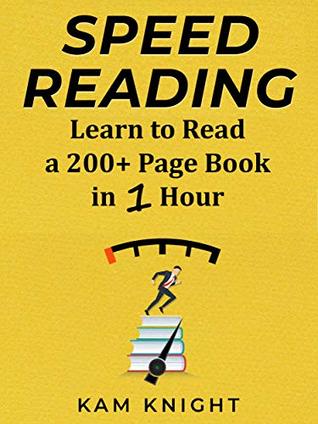More on this book
Community
Kindle Notes & Highlights
by
Kam Knight
Read between
August 27 - September 25, 2023
The two most important days in your life are the day you are born and the day you find out why—Mark Twain.
Since purpose has such power, anytime you sit down to read, set a goal or purpose. Determine beforehand what you want or hope to gain from the material.
Clarifying your purpose helps the mind tremendously. Instead of deciding which of the hundred urges to follow, it has a clear directive. It knows what to tune out and where to turn its attention. In other words, if you want your mind to know and pursue your goals and intentions, you must identify and clearly state them. Therefore, whenever you pick up something to read, state the purpose or intention for reading it. The clearer the purpose, the easier it will be for the mind to grasp the information—and the faster you can sift through it.
The key is to determine why you are reading the text or what you want to know once finished. If reading for an assignment, you might ask why the instructor assigned the chapter or section. Two universal examples include: What can I get out of this material or How will reading it help me?
Write in such a way that would allow someone who doesn’t know you to clearly understand your motivation.
Imagination is everything. It is the preview of life's coming attractions—Albert Einstein
This is how I want you to approach reading, to preview material before reading it. That means scrolling through the text, scanning the table of contents, major headings, any words in bold or italics, visual aids, and any information that seems relevant.
Preview is one of the most valuable steps readers can take to improve reading speed and comprehension.
One reason is that the mind doesn’t necessarily respond to what is happening in real-time, but to what it thinks is going to happen. In other words, the mind is constantly making predictions about the future.
Articles and Reports Read the first and last paragraphs, examine words in bold or italics, read any quoted texts, and glance at any illustrations.
Books and Manuals Read the front and back covers. Review the table of contents to get a feel for the organization, and notice if the book is divided into sections or parts. Read the chapter headings to get a sense of the topics that will be covered. Next, read samples of the text. If there is a preface, begin there. Read also the entire introduction and conclusion. Finally, skim through the book and notice items in bold, italics, quotes, and any diagrams or tables. While skimming, read the first and last paragraphs of each chapter.
If the text is challenging, read slowly. The same applies if the topic is new, unfamiliar, or something you really want or need to remember. On the other hand, if the content proves boring, familiar, or easy to process and digest, feel free to increase speed.
Space Reading directs you to avoid looking at the words you are reading, but rather at the spaces in between the words. That's right—at the spaces between words!
Think before you speak. Read before you think–Fran Lebowitz
Great minds discuss ideas; average minds discuss events–Eleanor Roosevelt
Just as there is a purpose to why we read, there is a purpose to why writers write. In other words, writers write to make a point, and your job as a reader is to understand that point.
In formal writing, paragraphs consist of three parts: topic sentence, supporting sentences, and concluding sentence.
Believe it or not, we forget up to 80 percent of what we hear, see, or learn within a few hours of hearing, seeing, or learning it!
Even though the news is factual, journalists present these facts in story form, thus why they are called news stories. Since they are presented like a story, they usually contain descriptions that are easy to visualize.


